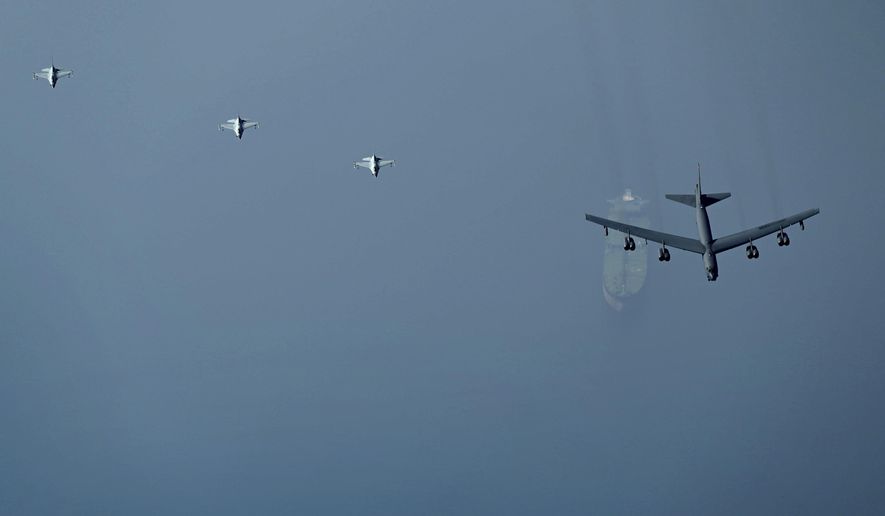The Air Force successfully tested a hypersonic missile off the coast of southern California last week, a sign that the U.S. may finally be catching up to rivals such as China and Russia that have already developed weapons capable of traveling faster than five times the speed of sound.
The AGM-183A missile was deployed Friday from a B-52H bomber, U.S. military officials said. It marked the first full prototype launch of the Air Force’s Air-launched Rapid Response Weapon (ARRW.)
The missile reached hypersonic speeds, completing its flight plan and detonating in the target area.
“Indications show that all objectives were met,” Air Force officials said Monday after announcing the results of the first ARRW operational prototype missile tests. Previous tests focused on proving the booster’s performance.
Hypersonic missiles typically fly at lower altitudes than ballistic missiles but are designed to strike high-value targets in “contested environments,” officials said. They pose a particular challenge for current missile defense systems because of their speed and maneuverability.
Washington has trailed Beijing and Moscow in the race for hypersonic dominance. Both countries have announced they are already fielding working hypersonic missile systems.
Russian President Vladimir Putin unveiled the Kh-47M2 Kinzhal hypersonic missile in March 2018. Kinzhal missiles were believed to have been used during the country’s invasion of neighboring Ukraine to strike underground weapons depots and fuel storage facilities.
U.S. officials last year acknowledged that China tested a hypersonic missile that went around the world and hinted that Beijing might one day have the capability to launch a surprise nuclear attack using hypersonic technology on the United States.
Gen. John Hyten, the former vice chairman of the Joint Chiefs of Staff, told CBS News that the missile went around the world and then dropped a hypersonic glide vehicle that traveled all the way back to China before striking the target area.
When asked how close the globe vehicle got to its target, Gen. Hyten said, “Close enough.”
Before Friday’s success, the U.S. hypersonic missile program had been beset with problems, including in June when an “anomaly” occurred during the first full system test that prevented the Defense Department from completing the mission.
Air Force Brig. Gen. Jason Bartolomei, executive officer of the Defense Department’s Armaments Directorate Program, touted not only the missile’s successful launch last week but the design of the test program itself.
“The ARRW team successfully designed and tested an air-launched hypersonic missile in five years,” Gen. Bartolomei said in a statement.
• Mike Glenn can be reached at mglenn@washingtontimes.com.




Please read our comment policy before commenting.